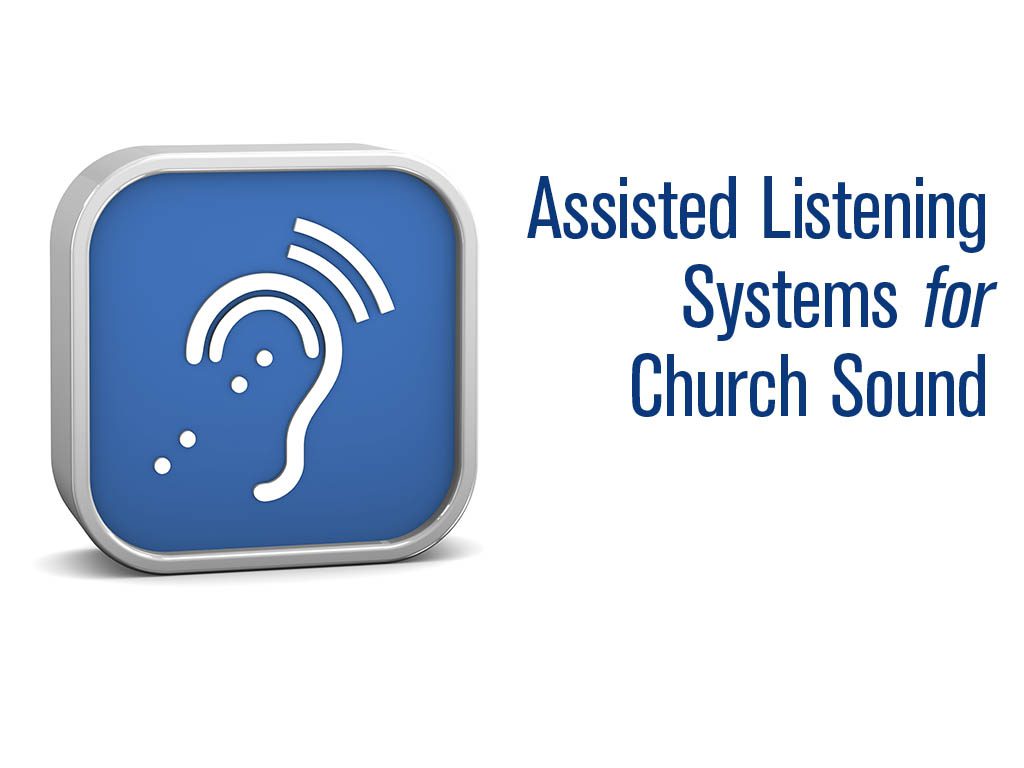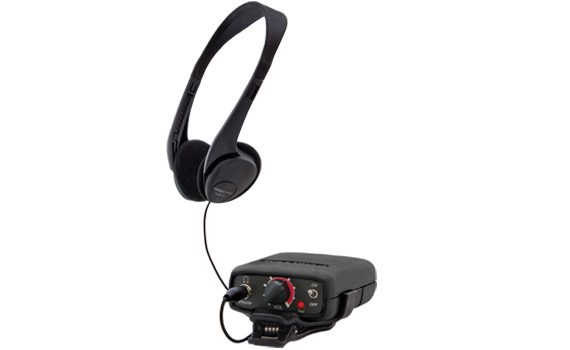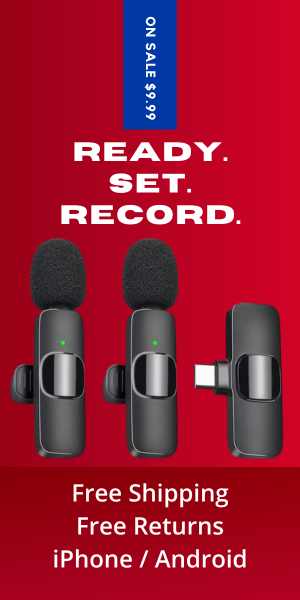Assisted listening systems are one of the most overlooked components of a church sound system.
By not including assisted listening (or “hearing assist”) devices in your sound system, it is possible that members of your congregation are missing out on hearing God's Word, and you may even be breaking the law.
What is Assisted Listening?
A personal assisted listening system allows listeners to use a personal audio device to listen to the mix from a sound reinforcement system.
This can be used by members of the congregation that are hard of hearing, require hearing aid technology, or simply want more control over the volume level of the sound at their ears.
Hearing assist systems typically consist of a wireless transmitter that connects to a mixing console or digital signal processor and wireless receivers that pick up the signal. The user can then connect to the personal receiver with personal headphones, earbuds, or inductive neckloops that are compatible with telecoil-equipped hearing aids.
Why You Need Personal Assisted Listening Devices
Personal assisted listening devices aren’t just for those who are diagnosed as hearing impaired. While some listeners may be able to technically hear the sound in the room, they may have a hard time understanding the words.
This issue often happens in large rooms or worship centers. It can be caused by bad acoustics, a result of where the listener is sitting, or there may be other personal hearing factors involved.
Using a personal listening device provides a clearer audio signal directly from the sound system that is free from the acoustic interference that can happen in some churches.
Those with hearing aids can also benefit from assisted listening devices for similar reasons.
The ultimate benefit is clear audio that cuts through the noise and other acoustic artifacts that can clutter the sound in a room.
Legal Considerations
The Americans with Disabilities Act (ADA) requires that all assembly areas with sound reinforcement be equipped with an assistive listening system. There are requirements to provide a minimum number of personal receivers based on the facility’s seating capacity.
Here is a basic chart for the number of receivers needed based on seating capacity.
| Seating Capacity | Receivers Required (min.) | Hearing aid compatible devices (min.) |
| Less than 50 | 2 | 2 |
| 51 to 200 | 2, plus 1 for every 25 seats | 2 |
| 501 to 1,000 | 20, plus 1 per 33 seats | 25% of total receivers |
| 1,001 to 2,000 | 35, plus 1 per 50 seats | 25% of total receivers |
| 2,001 and over | 55, plus 1 per 100 seats | 25% of total receivers |
While it is true that some churches are not required to meet ADA requirements, you may be leaving out an important component of your sound system that could benefit members of your congregation.
(Learn more about the ADA requirements here.)
Wireless Assisted Listening Technology
Wireless assisted listening systems are available in a variety of formats.
The three primary wireless technologies used are:
- RF (radio frequency)
- IR (infrared)
- Loop (induction loop)
RF systems are great for wireless coverage of a large area. Transmitters and receivers can use a variety of frequencies ranging from FM to Wifi bands. The most common wireless frequencies are in the 72 MHz and 216 MHz bands (for North America).
IR systems are perfect for rooms that have heavy wireless frequency interference or require privacy. Since IR transmits signal using invisible infrared light (like a TV remote control), it only works in line-of-sight environments.
Induction loop systems work well for users that use telecoil-compatible hearing aids. A wired loop is carefully installed around the perimeter of a room or facility and anyone with a compatible hearing aid will automatically receive the assisted listening system signal when they enter the induction loop coverage zone.
Practical Application
 Including an assisted listening system in your church sound system is not hard, and it doesn’t have to be terribly expensive either. (You can find quality wireless systems for less than $1,000.)
Including an assisted listening system in your church sound system is not hard, and it doesn’t have to be terribly expensive either. (You can find quality wireless systems for less than $1,000.)
It is best to have a dedicated sound system output that feeds the hearing assist transmitter, although smaller sound systems can use a “record out” or “aux out” audio feed.
When possible, there should be a modest amount of compression and limiting applied to the signal so that the dynamic range is controlled, eliminating big spikes in volume and ensuring that quiet sounds can be easily heard as well.
Personal wireless receivers can have standard alkaline batteries that will need to be periodically changed, or they can be supplied with rechargeable battery packs.
Earbuds and earphone devices should be provided with changeable foam pads or covers that can be cleaned or swapped out between uses.
The church sound tech should check the audio feed to the hearing assist system before each service or event to ensure that the signal is clear, clean, and working properly.
Awareness and Convenience
If you don’t have people asking for a personal listening device, it could be because they don’t know it is available.
It is important to display signage that lets your congregation know they can take advantage of the assisted listening system in your church.
Be sure to provide the types of earpieces and technology that your users will actually want to use.
The most common listening device is a single earphone that rests around the outside of the ear and slips over the back of the hear to stay in place. A sanitizing cloth can be used to clean the plastic case or foam earpads can be replaced.
Most personal wireless receivers allow the listener to use their own earbuds or headphones by simply plugging into the 1/8” (3.5mm) audio jack.
And of course, you should provide the recommended number of telecoil inductive neck loops based on your seating capacity so that users can use the system with compatible hearing aids.
Manufacturers & Resources
There are several manufacturers providing quality hearing assistance solutions for churches.
Here is a small sample:
Assisted listening systems are an important component for every church sound system. Are you meeting the needs of your congregation with this technology?
Note: Most churches are not required to comply with federal ADA requirements for assisted listening systems. However, some individual states do require the provision assisted listening systems. Even if you are not required by law to provide this type of system, it is a good idea to consider the specific needs of your congregation.









Can it interfere with sound system?
A great resource to find venues that have assistive listening devices available is http://www.aldlocator.com
Thank you for sharing, Steve.
Blessings,
Lauren
We’re wanting to provide better hearing for attendees. We currently have wireless devices that can be worn by attendees to hear but they are not popular.
What we have in mind is bluetooth technology where by an attendee can get the sound directly to their hearing aid via bluetooth transmission or, if the attendee has an iphone or android device they can grab the bluetooth signal on their own device with their own headphones in place.
Good question Rodger. Bluetooth isn’t really useful in a one-to-many transmission environment, as it requires the user’s device to be discretely paired with the transmitting device. However, there is currently WiFi technology available from Listen and Williams AV that provide what your are talking about. The following links may be helpful:
https://www.listentech.com/assistive-listening/listenwifi/ or https://www.listentech.com/listen-everywhere/products/ and https://www.williamssound.com/wifi
A member of our church has a hard time hearing the pastor. She mentioned that other churches have something called TELE. Whenit is on, all she has to do is press her hearing aid and Father’s voice comes on clearly as well as anyone elses on the altar s0eaking. I cannot find TELE on the internet. Do you know what she is talking about? thank you! Mary
Thanks for reading. I haven’t heard of TELE. I’m sorry! Most hearing solutions are either over wi-fi or radio frequency.
Hi Mary, I suspect that you are referring to telecoil technology. This is a technology some hearing aids have that allows sound to be picked up wirelessly. In order for this to work the assisted listening sound system needs so utilize what is called an inductive loop. This can be as simple a wire loop that connects to wireless receiver or more advanced systems will install a wire loop in the floor or ceiling that can cover the entire room. It is fascinating technology. There are several companies that offer inductive loop technology that is compatible with telecoil equipped hearing aids. I hope that helps!
hello- our church will be upgrading our sound system in the sanctuary but not for a year or two. We currently have very old personal amplifiers with single ear buds. Most of the time they are not working effectively. Would you be able to recommend a type of device, that is cost effective and easy for elderly people to use, that we could purchase for our hard of hearing members until we are able to improve our system in our sanctuary? Thank you for any input you could provide.
.
Hi Amy, it sounds like you’re old assisted listening system is failing or just suffering from old age. I would recommend putting in a new system. This system can be hooked up to the same audio source (as long as the quality there is still good), and it can also be used when you decide to upgrade to new equipment in the future.
I’ve used a lot of Listen systems over the years. Williams Sound (now Williams AV) also makes some quality products. I would recommend checking out some of their package deals that include the transmitter and select number of personal receivers.
You may wish to work with a local AV contractor to help you select the right system for your needs, as local frequency restrictions or other variables may cause you to select one product over another.
Here are a few links to consider:
https://www.listentech.com/assistive-listening/listenrf/idsp-systems/
https://www.williamssound.com/fm-systems
I hope that helps!
-James
Hi James –
We have a newish ($8,000) tcoil system which works great. But just recently people are saying they have new hearing aids which have Bluetooth but no tcoil. Ugh!
Is there a way to produce a signal that multiple Bluetooth devices can pick up?
Matthew
Hi Matthew, Bluetooth wireless technology is really designed as a one-to-one (one transmitter to one receiver) solution and doesn’t work for a “one-to-many” broadcast type of scenario. This is why you need to pair a Bluetooth device with the main transmitter or controller. For that reason you’ll likely need to use an more traditional RF system with earphone/earbud for users that don’t use t-coil technology in their hearing aids.
Does this device have an added feature for someone that is deaf and can’t hear at all?Maybe a device to type out what speaker is saying.
Good question Louise. Traditional hearing assist systems can be used with an induction loop neckband that may be compatible with cochlear implants. Beyond that, there might be other customized options available, I’m just not aware enough of the specifics to provide more detail. Speech-to-text tools included in some mobile apps can also be helpful. That technology is improving quickly and can provided a modest level of accuracy in the right environment.
with ADA could there then be funds available for the smaller churches to purchase these?
I’m really not sure. You would have to check with your state to see what funds are offered to faith-based non-profits for ADA improvements. Thanks for reading.
[…] Assisted listening systems are one of the most overlooked components of a church sound system. By not including assisted listening (or “hearing assist”) devices in your sound system, it is possible that members of your congregation are missing out on … ( read original story …) […]